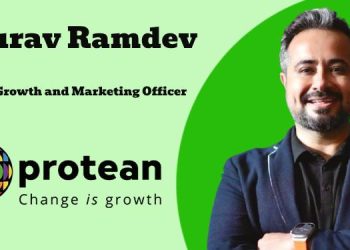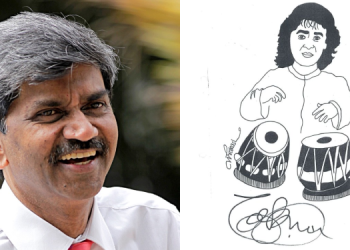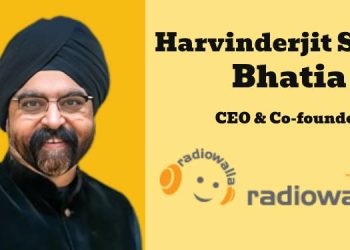By Yohan P Chawla
The Media Research Users Council (MRUC) on Friday released the IRS data for the first quarter of 2019, which stated that it’s definitely not the end for print publications and magazines.
According to the IRS, the Times of India retained its position of the Number One English daily. Dainik Jagran retained it’s leadership position in the Hindi Dailies category.
On the sidelines of this announcement I spoke with the man without whom an industry event is incomplete – knowledge leader and industry captain and evangelist Ashish Bhasin, who needs no introduction.
What were the impediments of releasing the quarterly data for IRS?
It’s not impediments or obstructions. It’s just that we haven’t done it. And the intent is that we should now do it. The reason for it is that print readership behaviour doesn’t change every day; for example, today you are reading a particular newspaper, it’s not like tomorrow you will read another one. The behaviour tends to be pretty consistent.
So in the past the research used to be once in two years, once in four years or once a year etcetera which, back then, was found to be sufficient.
I personally believe that the more frequently and regularly you give it, the more updated it gets –particularly in this era of digital, where everything is moving so fast.
So I think the readership habits may not change so significantly in a quarter, but reporting once a quarter keeps you more updated. Particularly in order to not get impacted by temporary events; for example, if there are elections, it is quite likely that readership will increase. Now, that’s not the norm, that’s just an exception. Let’s say that u fortunately, there have been floods, and the newspapers have not reached the readers — that doesn’t mean the readership is less.
To take care of that, we have said that this will be a rolling quarterly average. Every time one quarter will get added, one quarter at the back will fall down, just so that it kind of normalizes for aberrations like these. It will be a continuous research which will be available to people.
What we will present will be the latest four quarters that are available. A subscriber of the IRS can look at six quarters or eight quarters of data; there is enough slicing and dicing option available.
Which have been the key tech advancements that have powered this quarter’s release of the IRS?
The entire survey of 3,24,000 households has been done through CAPI — the Computer-Aided Personal Interview — which was a large investment, but one which was needed to be made.
Secondly, we have significantly introduced GPS- and OTP-based feedback on where the respondent is.
Thirdly, the C-form, which is actually from where which household will start… all of that has been completely digitized. In fact the whole proccess has been digitized.
So the two main, broad changes with the IRS data are the advancements in technology, and making an effort to release the data quarterly.
Why wasn’t HT included?
We release data after several rounds of verification. Until the data is verified and re-verified, we cannot release it.
There were 3,24,000 households interviewed. Does that mean one person per household? How are they selected?
There are two contacts — one is household, and the other is the individual. In some instances, the chief householder might be the respondent as they are selected at random, so its not necessary that the number of individuals being interviewed are 6,48,000 because they could be 5,00,000
What are the additions to the IRS software this time around?
So there used to be a genuine complaint from many of our users. For example, an English publication from Chennai sells a few copies in Delhi also. Now, while the survey in Chennai would pick up the publication well because there will be enough of a sample size in Chennai, in Delhi, if it is below a certain sample size, then that data would get suppressed, because that data becomes very volatile. Which, in a way, was unfair to smaller publications .
Sometimes, you don’t get access to high-end homes, so let’s say if you go to residential homes in (Mumbai’s upscale) Cuffe Parade, sometimes people don’t allow you access, so it’s very hard to get that, and those might be readers of some niche publications.
So they used to suffer, because we would report as ‘not available’ . So now, we have started reporting that for an overall view, where you cannot do an in-depth analysis because the sample size is small; but we have separately started reporting them. I believe that’s a big step forward.
What are the trends you map from online reading of newspapers?
Two things you can see — one being that the online reading of newspapers has really gone up, even in the last round, and this round there is a significant increase. Now if you look at it in the NCCS-A which is upper class and bigger towns, the growth is even more remarkable, and that seems to be across the board. So it’s a trend now that is coming from the last two rounds and is getting more and more pronounced.
Maybe a few years later IRS might perhaps even be measuring title-wise readership online.
A personal question: How do you manage to contribute so significantly to so many things together –the Denstu Network, GoaFest, IRS, among so many others. Just 24 paltry hours in each day – – is that enough for you?
(Laughs) I do work long hours. I clear my emails three times in the night, much to my wife’s disgust. I am a bad example to follow — I always say that because I am a workaholic. But you know when you enjoy something, you do it happily… and somebody has to do some industry work as well, and its not only me, there are a lot of people who contribute to that.
So you have to give of your full and your best till your health permits and till you are able to do it. I enjoy doing that, but of course, with my enhanced responsibility, my travel has increased significantly, so that adds another layer of complication, but you have to try your best.
I am not unique — you work as hard as I do, and most people work as hard as I do, so I just multitask and manage my work.

















